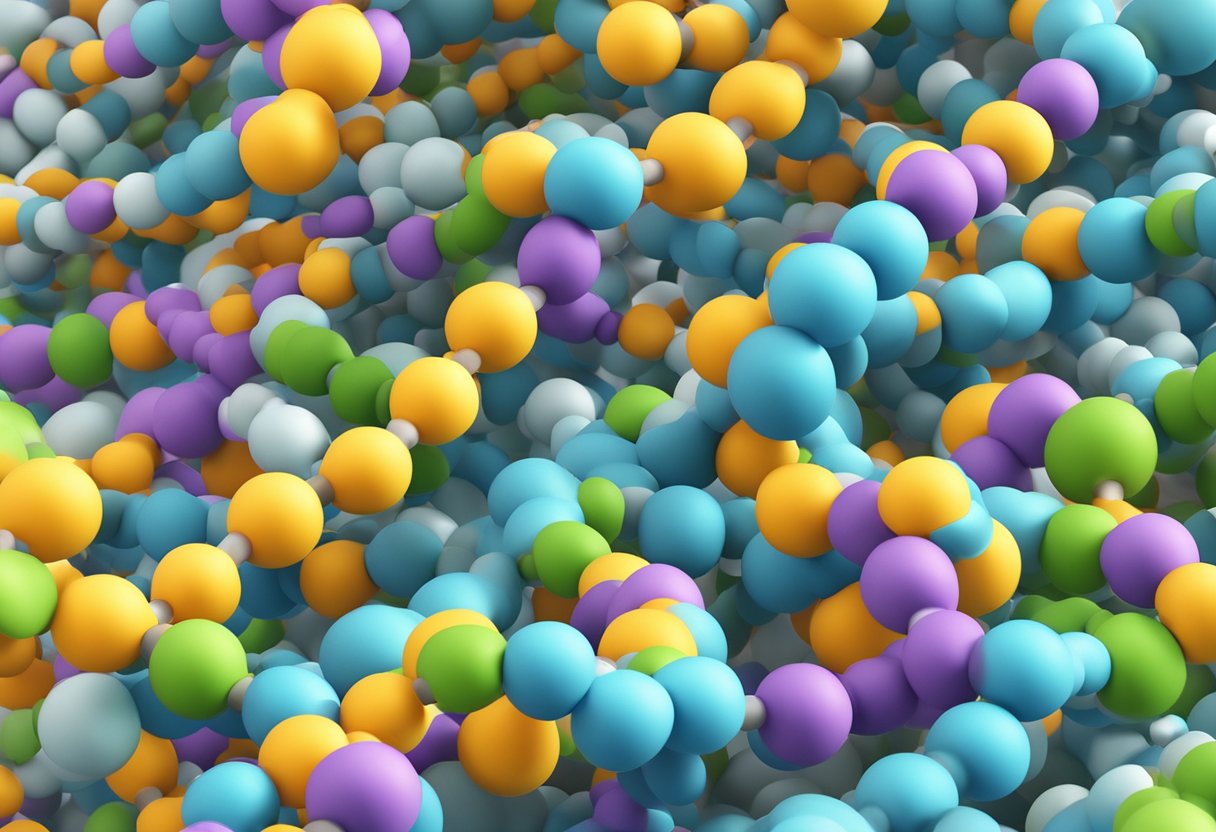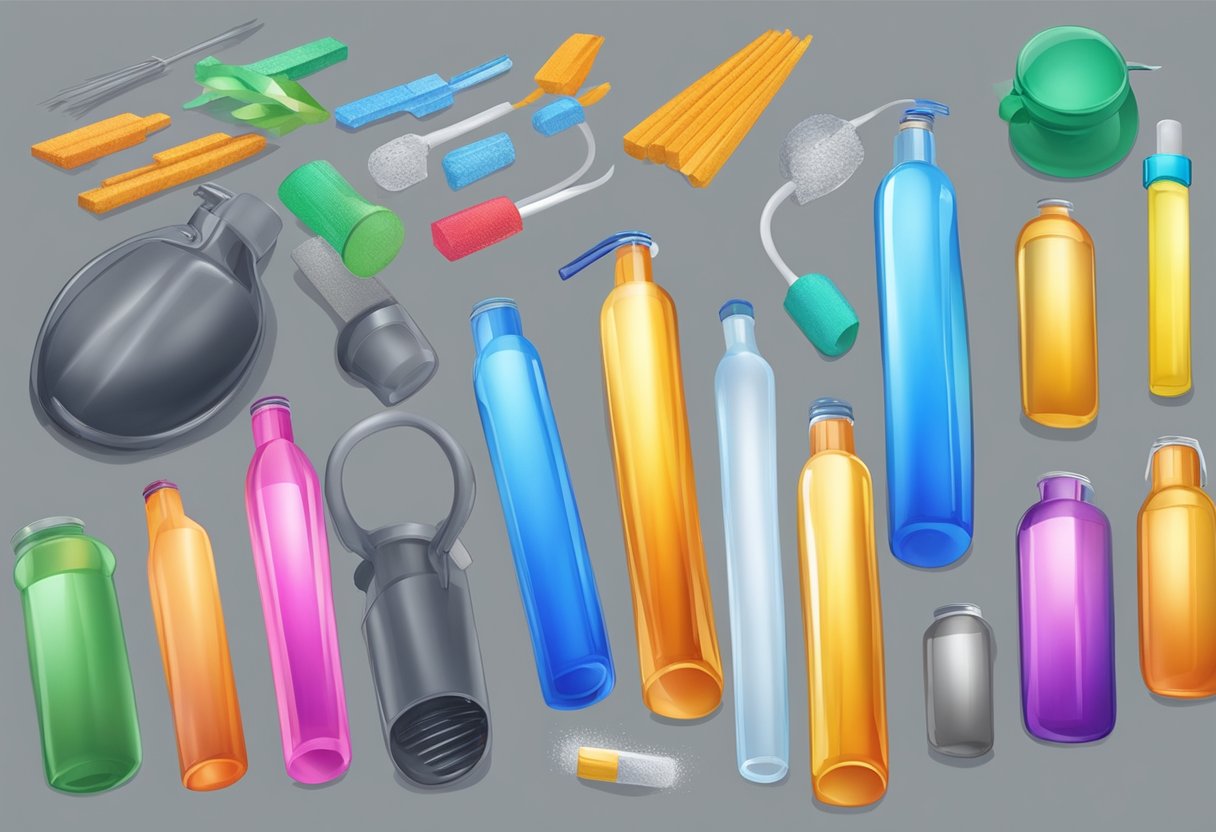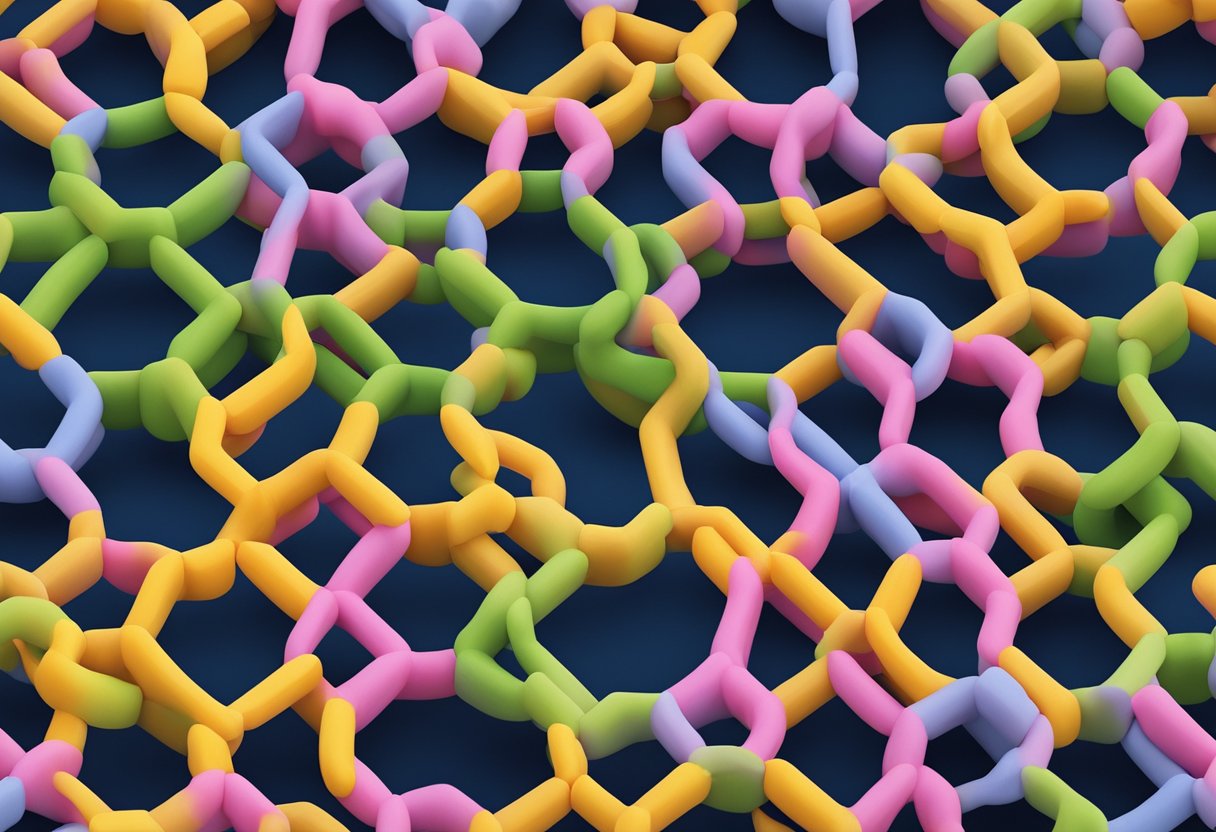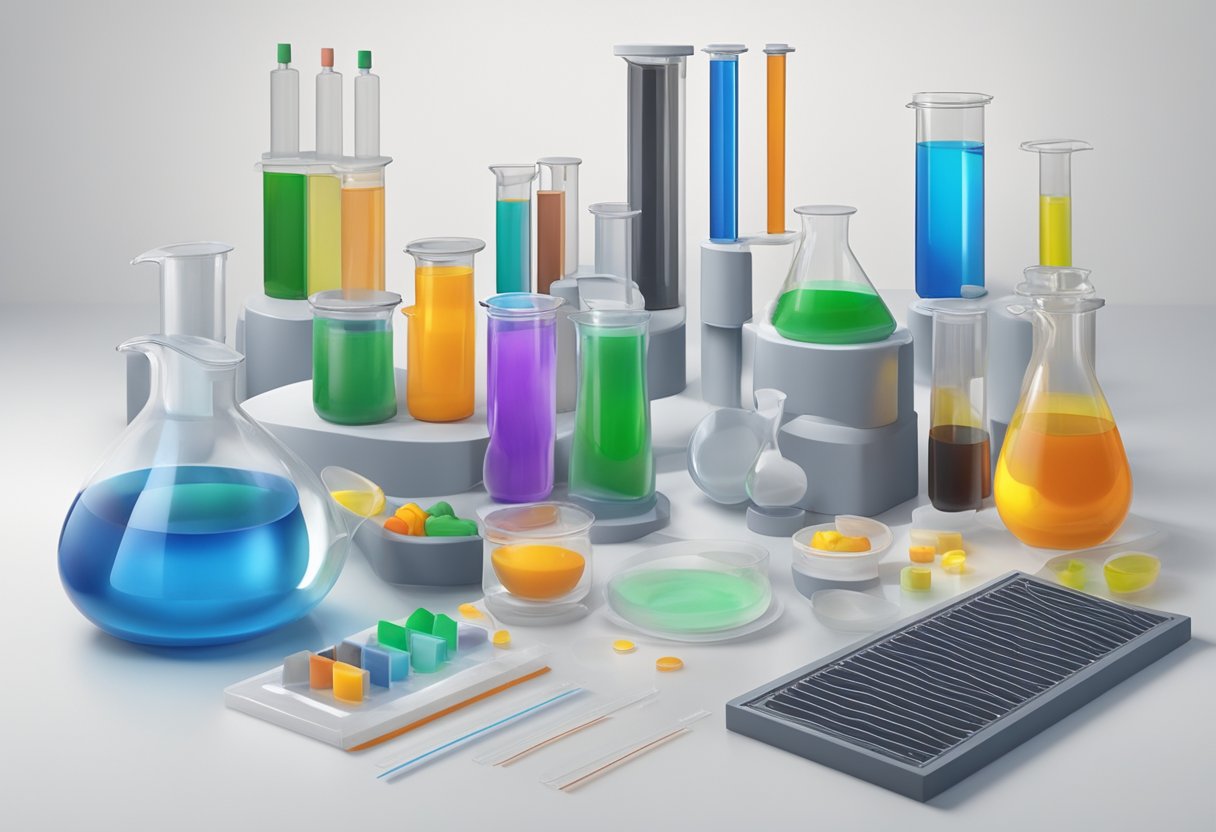Heat Stabilizers in Polymers: Understanding Their Importance and Functionality
19/01/2024
Polymers are widely used in various applications due to their desirable properties such as flexibility, durability, and resistance to chemicals. However, when exposed to high temperatures, polymers can degrade, leading to a loss of their original properties. To prevent this, heat stabilizers are added to polymers to maintain their properties and extend their lifespan.

Heat stabilizers are a class of additives that are used to prevent the degradation of polymers caused by heat. They work by scavenging free radicals, which are generated during the degradation process, and neutralizing them before they can cause further damage. Heat stabilizers can be added to polymers during the manufacturing process or after the polymer has been formed into its final shape.
There are various types of heat stabilizers available, each with its own unique properties and benefits. Some of the most commonly used heat stabilizers include metal soaps, hindered phenols, and phosphites. The choice of heat stabilizer depends on the specific polymer being used, as well as the application and the desired properties. Overall, the use of heat stabilizers in polymers is crucial to maintaining their properties and ensuring their longevity in a range of applications.
Fundamentals of Heat Stabilization in Polymers

Heat stabilization is a process that increases the ability of polymers to withstand high temperatures without degrading or breaking down. This is achieved by adding heat stabilizers to the polymer during the manufacturing process. Heat stabilizers work by scavenging free radicals, which are formed during the heating process, and preventing them from attacking the polymer chains.
There are several types of heat stabilizers available, including antioxidants, UV absorbers, and metal deactivators. Antioxidants are the most commonly used heat stabilizers and work by inhibiting the oxidation of the polymer. UV absorbers are used to protect polymers from the damaging effects of UV radiation, which can cause degradation. Metal deactivators are used to prevent the catalytic degradation of polymers caused by metal ions.
The effectiveness of a heat stabilizer depends on several factors, including the type of polymer, the processing conditions, and the intended use of the final product. The amount of heat stabilizer needed also varies depending on these factors. It is important to choose the appropriate heat stabilizer for the specific polymer and application to ensure optimal performance.
In addition to heat stabilizers, other additives such as lubricants, fillers, and flame retardants may also be added to polymers to improve their properties. It is important to consider the interactions between these additives and the heat stabilizer to ensure that they do not interfere with its effectiveness.
Overall, heat stabilization is an important process in the manufacturing of polymers, particularly those that will be exposed to high temperatures during use. By selecting the appropriate heat stabilizer and using it in the correct amount, manufacturers can ensure that their polystyrene products will maintain their properties and performance over time.
Types of Heat Stabilizers

Polymers are susceptible to degradation when exposed to high temperatures, UV radiation, and other environmental factors. Heat stabilizers are used to prevent the degradation of polymers caused by high temperatures. There are different types of heat stabilizers, each with unique properties that make them suitable for specific applications.
Metal Soaps
Metal soaps are one of the most commonly used heat stabilizers in polymers. They are made by combining a metal with a fatty acid. The metal ions act as Lewis acids, which scavenge free radicals and prevent them from degrading the polymer. Zinc, calcium, and magnesium are commonly used metals in metal soaps. Zinc stearate is one of the most widely used metal soaps in PVC applications due to its excellent stabilizing properties.
Organotin Stabilizers
Organotin stabilizers are another type of heat stabilizer used in polymers. They are organometallic compounds that contain tin. Organotin stabilizers work by forming a complex with the polymer that prevents the formation of free radicals. They are commonly used in PVC applications and are effective at preventing degradation caused by heat and UV radiation. However, they are also known to be toxic and can pose a risk to human health and the environment.
Phosphites and Phosphonites
Phosphites and phosphonites are antioxidants that act as heat stabilizers in polymers. They work by scavenging free radicals and preventing the oxidation of the polymer. They are commonly used in polyolefin applications and are effective at preventing degradation caused by heat and UV radiation. They are also used in combination with other heat stabilizers to provide enhanced protection against degradation.
HALS (Hindered Amine Light Stabilizers)
HALS are a type of heat stabilizer that is effective at preventing degradation caused by UV radiation. They work by scavenging free radicals and preventing the formation of new ones. HALS are commonly used in polyolefin applications and are effective at preventing the yellowing and loss of mechanical properties caused by UV radiation. They are also used in combination with other heat stabilizers to provide enhanced protection against degradation.
Overall, the choice of heat stabilizer depends on the specific polymer and the application it will be used in. Metal soaps, organotin stabilizers, phosphites and phosphonites, and HALS are all effective at preventing degradation caused by heat and UV radiation. However, each type of heat stabilizer has its own unique properties that make it suitable for specific applications.
Mechanisms of Heat Stabilization

Polymers are susceptible to degradation when exposed to high temperatures. Heat stabilizers are added to polymers to prevent this degradation. Heat stabilizers function through various mechanisms to prevent degradation. Some of the common mechanisms of heat stabilization are discussed below.
UV Absorption
UV absorption is a common mechanism used for heat stabilization in polymers. UV absorbers are added to polymers to absorb the UV radiation and convert it into harmless heat energy. This mechanism is particularly useful for polymers that are exposed to sunlight for extended periods. UV absorbers are typically organic compounds that absorb UV radiation in the range of 280-400 nm.
Free Radical Scavenging
Free radicals can cause degradation in polymers by reacting with the polymer chains and breaking them down. Free radical scavengers are added to polymers to prevent this degradation. Free radical scavengers function by reacting with the free radicals and neutralizing them. This mechanism is particularly useful for polymers that are exposed to high temperatures for extended periods.
Peroxide Decomposition
Peroxide decomposition is another mechanism used for heat stabilization in polymers. Peroxides can cause degradation in polymers by initiating a chain reaction that breaks down the polymer chains. Peroxide decomposers are added to polymers to prevent this degradation. Peroxide decomposers function by breaking down the peroxides into harmless byproducts. This mechanism is particularly useful for polymers that are exposed to high temperatures for extended periods.
In summary, heat stabilizers are added to polymers to prevent degradation when exposed to high temperatures. Heat stabilizers function through various mechanisms such as UV absorption, free radical scavenging, and peroxide decomposition. The choice of mechanism depends on the type of polymer and the conditions under which it will be used.
Selection Criteria for Heat Stabilizers

When selecting a heat stabilizer for polymers, several factors must be considered to ensure the optimal performance of the final product. The following are some of the essential criteria that should be taken into account:
Polymer Compatibility
The heat stabilizer must be compatible with the polymer being used. It should not react with the polymer or cause any adverse effects on its physical or chemical properties. The compatibility of the heat stabilizer can be determined by conducting compatibility tests on the polymer.
Processing Conditions
The processing conditions used during the production of the polymer must also be considered when selecting a heat stabilizer. Factors such as temperature, pressure, and residence time can affect the stability of the polymer. The heat stabilizer should be able to withstand the processing conditions without degrading or losing its effectiveness.
End-Use Requirements
The end-use requirements of the polymer should also be taken into account when selecting a heat stabilizer. The heat stabilizer should be able to provide the required level of stability for the intended application. For example, if the polymer is used in outdoor applications, it should have excellent weathering resistance.
In summary, selecting the right heat stabilizer for polymers involves considering factors such as polymer compatibility, processing conditions, and end-use requirements. By taking these factors into account, manufacturers can ensure that their products are stable and perform as expected.
Thermal Degradation of Polymers
Thermal Oxidative Degradation
Thermal oxidative degradation is a common type of degradation that occurs in polymers due to exposure to high temperatures and oxygen. This type of degradation is particularly problematic for polymers used in high-temperature applications, such as automotive and aerospace industries. During thermal oxidative degradation, the polymer chains break down, leading to a loss of mechanical properties and eventually, failure of the material.
Mechanisms of Thermal Degradation
The mechanisms of thermal degradation in polymers are complex and depend on the specific polymer and the conditions of exposure. However, there are some general mechanisms that are commonly observed. One mechanism is chain scission, where the polymer chains break down into smaller fragments. Another mechanism is crosslinking, where the polymer chains become interconnected, leading to a loss of flexibility and increased brittleness.
Additionally, thermal degradation can lead to the formation of free radicals, which can further accelerate the degradation process. The presence of impurities, such as metal ions, can also catalyze the degradation process.
To prevent thermal degradation in polymers, heat stabilizers are commonly added to the material. Heat stabilizers can function by scavenging free radicals, inhibiting chain scission, or preventing crosslinking. Common types of heat stabilizers include antioxidants, UV stabilizers, and metal deactivators.
Overall, understanding the mechanisms of thermal degradation in polymers and the use of heat stabilizers is crucial for the development of polymer materials with improved thermal stability and longevity.
Application of Heat Stabilizers in Various Polymers
PVC (Polyvinyl Chloride)
PVC is a widely used polymer in the construction industry due to its durability and low cost. However, PVC is highly sensitive to heat and UV radiation, which can lead to degradation and loss of mechanical properties. Heat stabilizers are commonly used in PVC to prevent degradation and extend the lifespan of the material.
Lead-based stabilizers were once widely used in PVC, but due to environmental concerns, they have been phased out. Today, calcium-zinc stabilizers, organotin stabilizers, and mixed metal stabilizers are commonly used in PVC. These stabilizers work by reacting with HCl, which is generated during PVC degradation, to form a stable complex that does not promote further degradation.
Polyolefins
Polyolefins, such as polyethylene and polypropylene, are widely used in packaging and automotive applications due to their low cost and good mechanical properties. However, they are also sensitive to heat and UV radiation, which can lead to degradation and loss of mechanical properties.
Heat stabilizers are commonly used in polyolefins to prevent degradation and extend the lifespan of the material. Hindered amine light stabilizers (HALS) and UV absorbers are commonly used in polyolefins to protect against UV radiation. Metal deactivators and phenolic antioxidants are used to protect against heat degradation.
Engineering Plastics
Engineering plastics, such as polycarbonate and nylon, are used in a wide range of applications due to their high strength and toughness. However, they are also sensitive to heat and UV radiation, which can lead to degradation and loss of mechanical properties.
Heat stabilizers are commonly used in engineering plastics to prevent degradation and extend the lifespan of the material. Hindered phenolic antioxidants and phosphite antioxidants are commonly used in engineering plastics to protect against heat degradation. HALS and UV absorbers are used to protect against UV radiation. Metal deactivators are also used to prevent discoloration caused by trace metals in the material.
Environmental and Health Considerations
Regulatory Aspects
Polymers are widely used in various applications, and their production and use are subject to regulatory oversight. Heat stabilizers used in polymers are no exception. Regulatory authorities such as the Environmental Protection Agency (EPA) and the European Chemicals Agency (ECHA) have set limits on the use of certain heat stabilizers due to their potential environmental and health impacts.
For example, lead-based heat stabilizers have been phased out in many countries due to their toxicity and potential for bioaccumulation in the environment. Similarly, cadmium-based heat stabilizers are also subject to strict regulations due to their toxicity and potential for carcinogenic effects.
Manufacturers of polymers and heat stabilizers must comply with these regulations and ensure that their products meet the required standards. This includes labeling and documentation requirements, as well as testing and reporting obligations.
Non-Toxic Alternatives
To address the environmental and health concerns associated with traditional heat stabilizers, manufacturers have developed non-toxic alternatives. These include calcium-based, zinc-based, and organic-based heat stabilizers.
Calcium-based and zinc-based heat stabilizers have been found to be effective in many applications and are widely used as alternatives to lead-based and cadmium-based stabilizers. Organic-based heat stabilizers, such as those based on phosphites and phenolics, are also gaining popularity due to their low toxicity and effectiveness in high-temperature applications.
In addition to their environmental and health benefits, non-toxic alternatives to traditional heat stabilizers can also offer economic benefits. For example, they may reduce the need for costly disposal and cleanup of toxic waste materials, and may also reduce regulatory compliance costs.
Overall, the use of heat stabilizers in polymers is subject to strict regulatory oversight due to their potential environmental and health impacts. However, non-toxic alternatives are available and can offer effective and economic solutions to these concerns.
Advancements in Heat Stabilizer Technology
Heat stabilizers are essential additives used in polymers to prevent degradation caused by high temperatures during processing and service life. In recent years, there have been significant advancements in heat stabilizer technology to improve the performance and sustainability of polymers. This section highlights two emerging technologies that have shown promising results in heat stabilization.
Nanotechnology in Heat Stabilization
Nanotechnology has opened up new avenues for developing highly efficient heat stabilizers that can enhance the properties of polymers. Nanoparticles such as oxides, carbonates, and phosphates have been used as heat stabilizers due to their high surface area, reactivity, and ability to absorb UV radiation. For instance, zinc oxide nanoparticles have been shown to improve the thermal stability of polypropylene (PP) by reducing the rate of degradation and enhancing the mechanical properties. Similarly, calcium carbonate nanoparticles have been used as a synergistic heat stabilizer in PVC to reduce the amount of lead-based stabilizers.
Bio-based Heat Stabilizers
The increasing demand for sustainable and eco-friendly products has led to the development of bio-based heat stabilizers derived from renewable sources. These stabilizers are biodegradable, non-toxic, and have low carbon footprints. For example, cardanol, a byproduct of cashew nut processing, has been used as a heat stabilizer in PVC and PP. Cardanol has shown excellent thermal stability, UV resistance, and compatibility with polymers. Similarly, lignin, a byproduct of pulp and paper manufacturing, has been used as a heat stabilizer in PVC and polyethylene. Lignin has shown promising results in improving the thermal stability and mechanical properties of polymers.
In conclusion, nanotechnology and bio-based heat stabilizers are emerging technologies that offer significant improvements in the heat stabilization of polymers. These technologies provide sustainable and efficient alternatives to traditional stabilizers, reducing the environmental impact of polymer processing and disposal.




